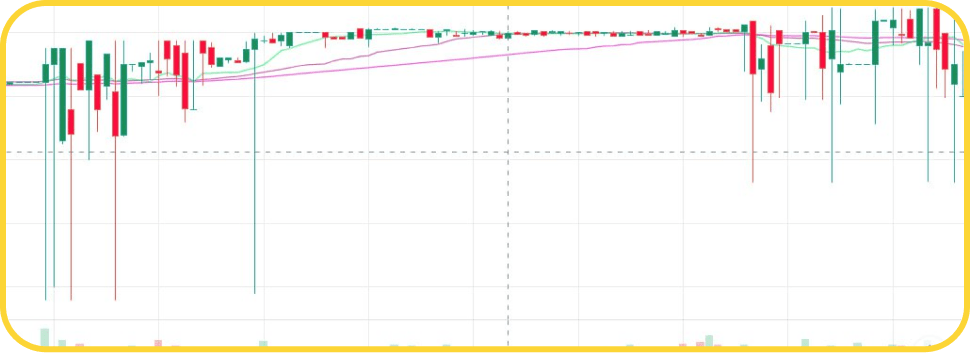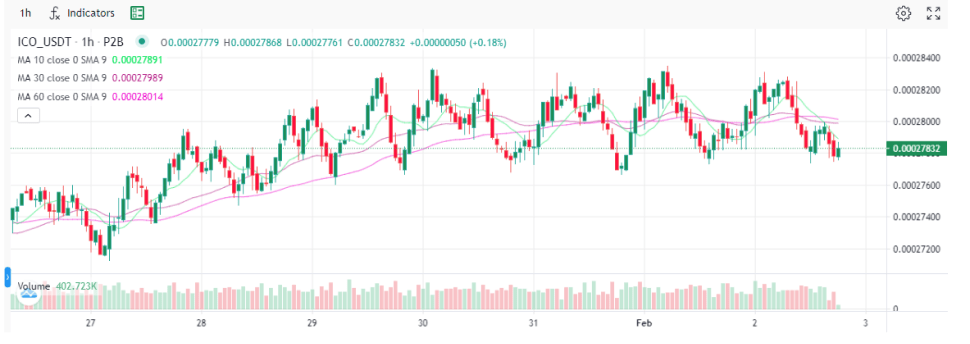
The challenge
The project arrived with a critical problem: liquidity loss and a drifting, unattractive chart. Our primary task was to identify why liquidity was leaking and stabilize the token’s state. The secondary goal was to determine the optimal market price and design a liquidity management strategy that could sustain a higher price level and support renewed liquidity growth.
Diagnosis: why liquidity was leaking
We started with a full forensic review to understand where and why depth disappeared. That meant examining smart-contract specifics, token distribution across the audience, the history of average price and volume, and the aggregate number of traded tokens over time. This audit surfaced the structural factors behind the liquidity drain and highlighted where order books routinely thinned out, where spreads widened, and how quickly selling pressure propagated across venues.
From this analysis we could forecast realistic trading volume and pinpoint an attractive token price for the current audience—an anchor for credible price discovery rather than forced optics.
Strategy: controlled price discovery, not flatlining
The risk profile pointed to “jump-like” trading if we tried to impose rigid control. Instead, we engineered a price stabilization strategy that lets the market breathe while preventing disorderly gaps. In practice, we paired price maintenance at defined bands with soft price control that allows brief, natural damp/pump movements during active periods. This combination protects buyers and sellers from slippage, avoids panic-sale cascades, and preserves a chart that looks—and trades—like a real market.
Daily reporting and feedback loops let us tune liquidity provisioning quickly based on trader reactions and the broader market state, so depth targets and spread discipline stayed aligned with live conditions.
Execution highlights
Stabilization began at the levels where liquidity had historically vanished. We concentrated resting liquidity to hold spreads narrow and ensure two-sided books at and around mid. As confidence returned, we progressively improved market depth and the buy/sell ratio, guiding the token from reactive defense to proactive liquidity management. Throughout, we watched for panic-sale signatures and responded with targeted depth rather than blunt, expensive support.
Results
- The calculated market price helped stabilize the token and halt liquidity loss.
- The order book consistently showed an ideal buy/sell ratio and a narrow spread, signaling fair execution.
- Organic trading volume rose from 1% to 25% on both sides of the book, reflecting healthier participation.
- With stability restored, the project expanded its market by opening an additional Token/USDC pair.
In short, the tactic of controlled price discovery—accepting a measured, manageable dip in visible support while real depth was rebuilt—led to durable market health and sustainable growth in participation.


Why this approach works
Profit and stability are not opposites when liquidity engineering is done correctly. By aligning depth targets, spread control, and price discovery with the project’s audience and token distribution, the market regains credibility. Traders recognize a chart they can trust; they engage more, and organic volume climbs without artificial spikes.
When to use a strategy like this
Consider this playbook when your token suffers from persistent liquidity loss, inconsistent order-book depth, or a history of jump-like price action. It’s especially effective before unlocks, treasury moves, or new listings—moments when price discovery and risk management must be engineered, not hoped for.
Work with BeLiquid
If you need to stop liquidity loss, discover the real market price, and grow organic trading activity without breaking market health, we can help design and execute the plan.

